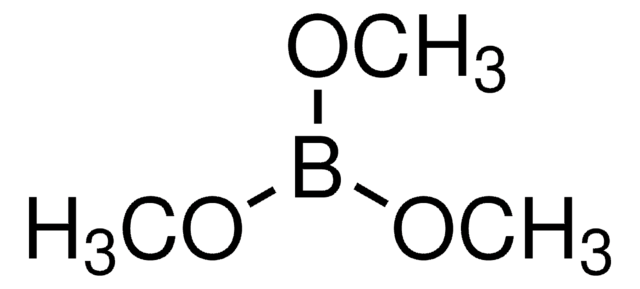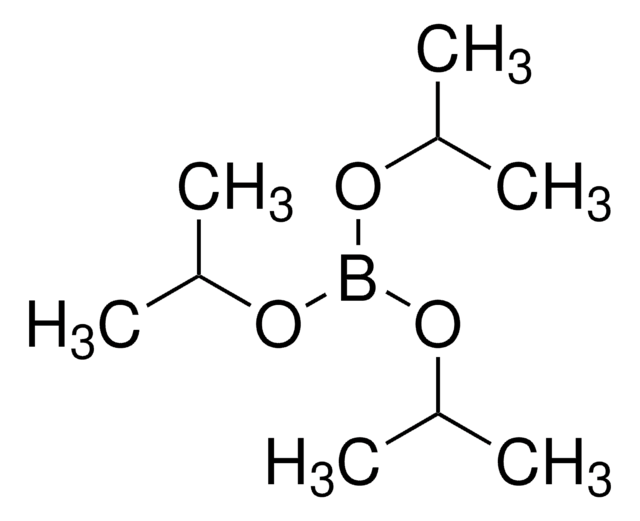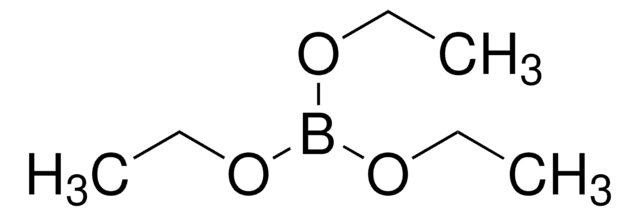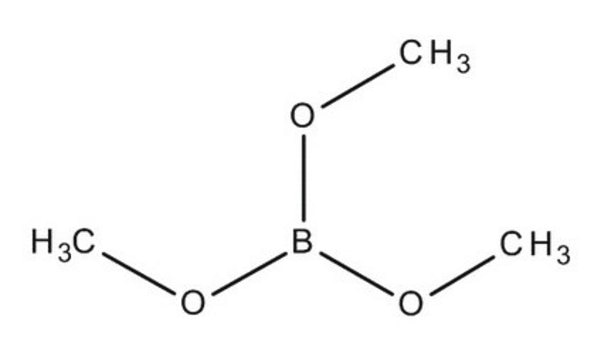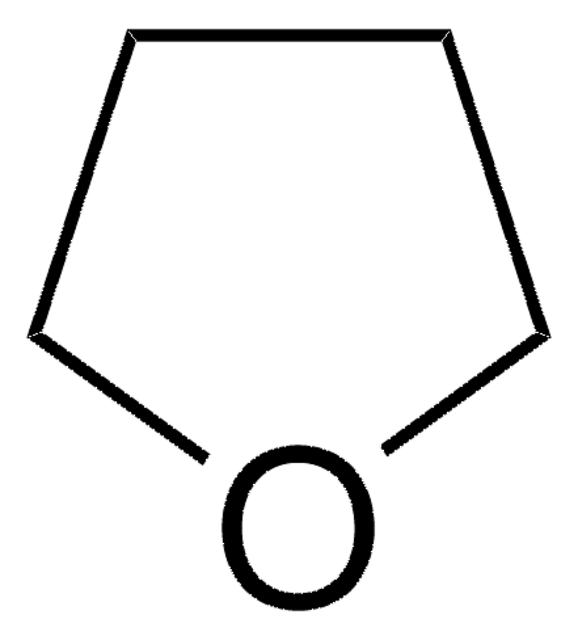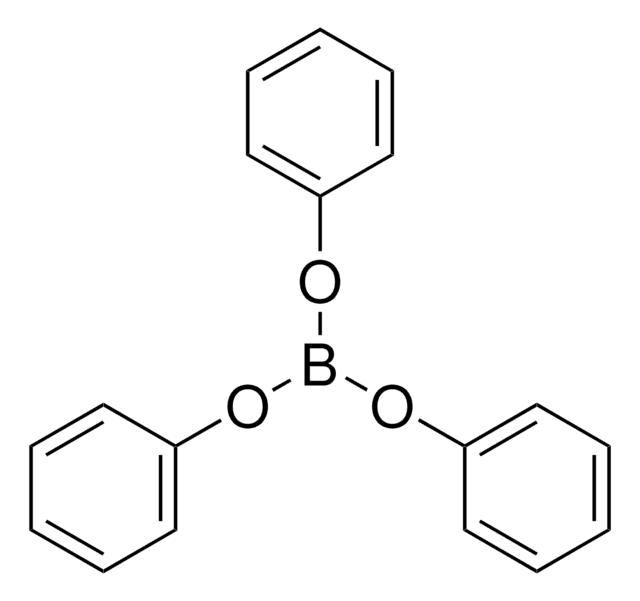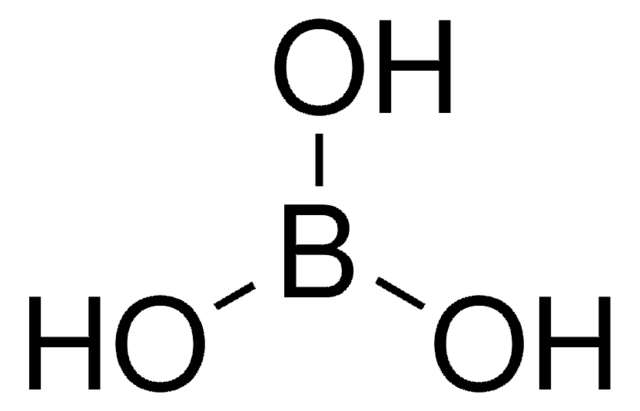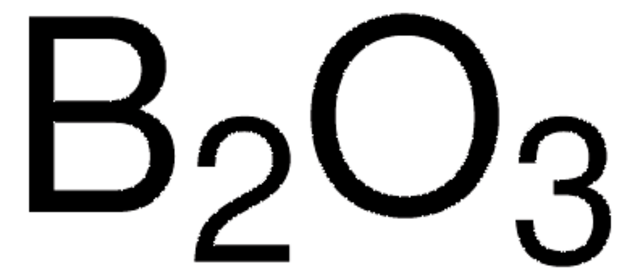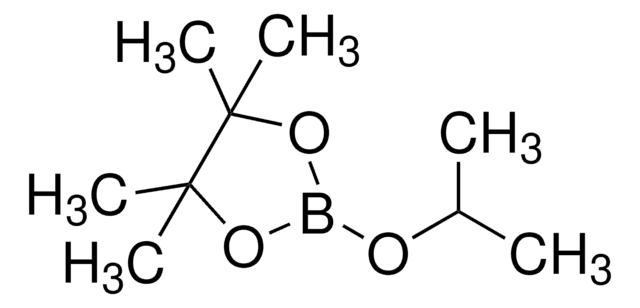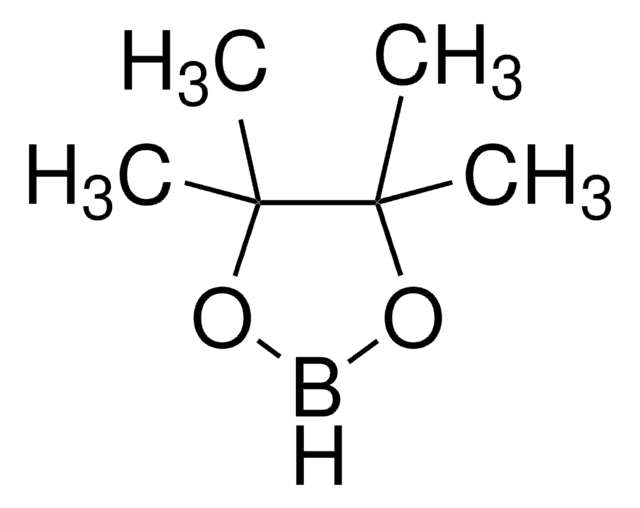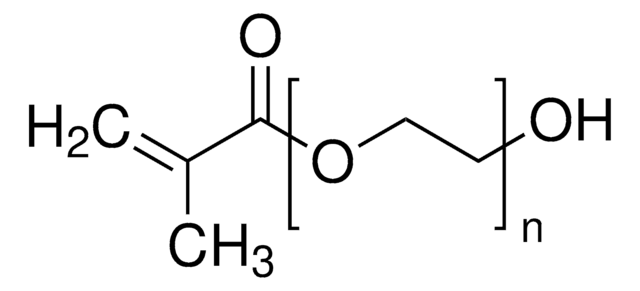443999
Trimethylborat
purified by redistillation, ≥99.5%
Synonym(e):
Borsäure-trimethylester, Methylborat
About This Item
Empfohlene Produkte
Dampfdichte
3.59 (vs air)
Qualitätsniveau
Assay
≥99.5%
Form
liquid
Aufgereinigt durch
redistillation
Brechungsindex
n20/D 1.346 (lit.)
bp
68-69 °C (lit.)
mp (Schmelzpunkt)
−34 °C (lit.)
Dichte
0.932 g/mL at 20 °C (lit.)
SMILES String
COB(OC)OC
InChI
1S/C3H9BO3/c1-5-4(6-2)7-3/h1-3H3
InChIKey
WRECIMRULFAWHA-UHFFFAOYSA-N
Suchen Sie nach ähnlichen Produkten? Aufrufen Leitfaden zum Produktvergleich
Verwandte Kategorien
Anwendung
- A reagent in the preparation of various trialkylamine−boranes from corresponding trialkylamines using lithium hydride/aluminum chloride catalyst.
- A source of boron in the synthesis of boron nitride (BN) nanotubes by thermal-heating chemical vapor deposition (TH-CVD) method.
- An electrolytic additive for electrochemical applications.
- A reagent along with lithium di-tert-butyl(2,2,6,6-tetramethylpiperidino)zincate (TMP-zincate) for the synthesis of 1-tert-butyl-3,4-dihydroisoquinoline from isoquinoline via ortho metalation reaction.
Signalwort
Danger
Gefahreneinstufungen
Acute Tox. 3 Dermal - Acute Tox. 3 Inhalation - Acute Tox. 3 Oral - Eye Irrit. 2 - Flam. Liq. 2 - Repr. 1B - STOT SE 1
Zielorgane
Eyes
Lagerklassenschlüssel
3 - Flammable liquids
WGK
WGK 1
Flammpunkt (°F)
12.2 °F - (own results)
Flammpunkt (°C)
-11 °C - (own results)
Persönliche Schutzausrüstung
Eyeshields, Faceshields, Gloves, type ABEK (EN14387) respirator filter
Analysenzertifikate (COA)
Suchen Sie nach Analysenzertifikate (COA), indem Sie die Lot-/Chargennummer des Produkts eingeben. Lot- und Chargennummern sind auf dem Produktetikett hinter den Wörtern ‘Lot’ oder ‘Batch’ (Lot oder Charge) zu finden.
Besitzen Sie dieses Produkt bereits?
In der Dokumentenbibliothek finden Sie die Dokumentation zu den Produkten, die Sie kürzlich erworben haben.
Kunden haben sich ebenfalls angesehen
Unser Team von Wissenschaftlern verfügt über Erfahrung in allen Forschungsbereichen einschließlich Life Science, Materialwissenschaften, chemischer Synthese, Chromatographie, Analytik und vielen mehr..
Setzen Sie sich mit dem technischen Dienst in Verbindung.